A very unpleasant, albeit very rare phenomenon, in which acne appears on the head under the scalp, is caused by for various reasons. Unlike rashes on the face, acne on the scalp is hardly noticeable, but this does not mean that they do not require treatment. Serious consequences of this can include scarring and hair loss.
Why do acne appear on the head?
Before you start treating acne on your head in your hair, you need to find out what triggered its appearance. Often, rashes on the scalp are folliculitis - an infectious and inflammatory lesion of the hair follicles, which supply the sebaceous and sweat glands. Various factors, divided into external and internal, can contribute to the development of inflammation. Let's look at them.
External reasons:
- improper scalp care;
- exposure to low-quality hair care products, hard chlorinated water;
- use of synthetic bed linen and hats that do not allow the skin to breathe;
- influence of climatic conditions;
- skin damage;
- hypothermia of the scalp.
The listed factors lead either to direct penetration of infection into hair follicles, or to a decrease in the barrier functions of the skin and disruption of the glands. As a result, blockage of the glands and inflammation occurs, affecting the surrounding tissues. The infection can be bacterial or viral in nature, and is less commonly represented by fungal pathogens.
Internal provoking factors may include the following:
- disturbances in hormone levels associated with genetic characteristics, diseases of the endocrine or reproductive system, physiological changes (during menstruation, pregnancy, menopause);
- organ malfunctions digestive system, resulting in toxins in large quantities excreted through the sweat glands;
- stress, leading to disorders in many body systems;
- taking certain medications (barbiturates, etc.);
- weakened immunity;
- unbalanced diet.
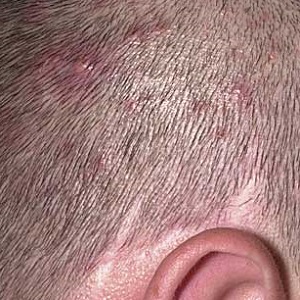
Purulent pimples on the head
If the pimples on the head are tubercles filled with pus, this indicates a bacterial inflammatory lesion. In most cases, the culprits are. When such pimples on the scalp under the hair appear in small quantity and have no big sizes, we can talk about a superficial lesion. In more severe cases, inflammation covers the entire follicle, and then the pimples are large and prone to merging.
Red pimples on the head
The resulting pimples on the head in the hair of women with red color are more likely to be initial stage bacterial inflammation, and after 1-2 days they transform into pustules. Another possible reason may be caused by the herpes virus. IN in rare cases red rashes of this localization are diagnosed as acne syphilide - a consequence of a disease caused by the bacterium Treponema pallidum.
Painful pimples on the head
When wondering why pimples appeared on the head, you should carefully examine their appearance and identify accompanying manifestations. Rashes are often accompanied by pain, the intensity of which can be used to judge the depth of the inflammatory focus and the severity of the lesion. If, in addition to pain, there is also itching, and the pain spreads beyond the area of the rash, zoster caused by herpes cannot be ruled out.
Herpetic rashes on the head
With a herpes virus infection, pimples on the head itch, hurt, and look like numerous blisters on a red background, which later turn into yellowish crusts and sores. The lesion can be caused by close contact with a human carrier of the infection in the presence of fresh lesions on the scalp or activation of herpes zoster in the body against the background of weakened immune forces.
How to get rid of acne on your head?
If acne appears on your head, you should consult a dermatologist and get diagnosed. In cases where rashes are a symptom of serious problems, it is necessary to determine a treatment regimen for the underlying disease:
- In case of violations hormonal levels hormone-containing drugs are prescribed (Duphaston, Estradiol succinate, etc.).
- If you have problems with digestive tract– enterosorbents (Enterosgel, Polysorb, etc.), hepatoprotectors (Essentiale, Allochol, etc.), enzymes (Pancreatin, Festal, etc.), probiotics (Linex, Lactobacterin, etc.), etc.
- Herpetic lesions are treated with the use of specific antiviral agents (Acyclovir, Famciclovir, etc.), immunostimulating drugs (Immunal, Cycloferon, etc.).
- If extensive and deep bacterial acne on the scalp is diagnosed, treatment may include oral antibiotics (Amoxicillin, Doxycycline, etc.).
- Often, for various problems, vitamin-mineral complexes containing vitamin C, B and zinc are prescribed.
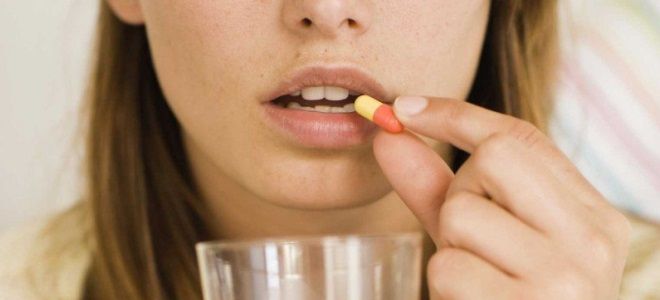
In other cases, sufficient measures to get rid of acne on the head are:
- ensuring correct hygiene care behind the scalp;
- treatment of areas of inflammation with antiseptics, antibacterial and anti-inflammatory agents;
- diet therapy (limiting fatty, spicy, fried, sweet foods, enriching the diet fresh fruit, vegetables);
- healthy image life.
Shampoo for acne on the head
To cure pimples on the head in the hair, it is important to choose good shampoo, suitable for hair type. In mild cases universal option may become baby shampoos, because... they do not contain aggressive components, they are soft and hypoallergenic. In more severe cases, it is better to purchase a medicated shampoo that has an antiseptic, anti-inflammatory effect and has a beneficial effect on the hair follicles. Here are examples of such shampoos:
- Freederm PH balance;
- Phyto PhytoCedrat;
- Librederm "Tar";
- PhytoBioTechnologies Stop Demodex;
- Kis KeraScalp Healing;
- "Ekoderm";
- "Cynovitis."
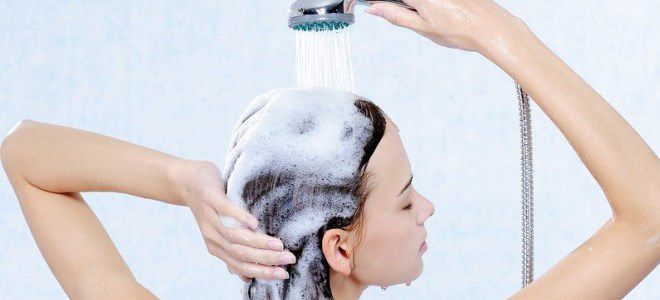
Ointment for acne on the head in the hair
When choosing how to treat acne on the head, you need to discuss with your doctor the issue of using external agents to directly treat the rash. To do this, you can use antiseptic solutions (Chlorhexidine, salicylic alcohol, iodine solution, etc.), but best effect will be able to provide drugs in the form of ointments that have an antibacterial, drying, anti-inflammatory effect. These ointments include:
- ichthyol ointment;
- Sintomycin;
- Levomekol;
- Rosamet;
- Baneocin.
Pimples on the head - treatment with folk remedies
With a problem such as acne on the head, traditional methods will help you achieve faster results. positive result. For example, you can use the following methods:
- Instead of shampoo, use tar or laundry soap;
- Add a couple of drops to shampoo essential oil tea tree, cedar or rosemary;
- Rinse your hair after washing with a decoction of chamomile, nettle or calendula;
- Apply a warm lotion of strong saline solution to the areas of inflammation.
- A clay mask for acne on the head gives a good effect.
Mask recipe
Acne is an extremely unpleasant phenomenon that can appear on any part of the body. Moreover, most of the rashes signal the onset of a rather serious illness. Therefore, it is imperative to monitor the appearance of such neoplasms and fight them.
Quite often, pimples, including purulent and inflamed ones, appear on the head, in the area of the scalp. Doctors say that these are diagnosed more often in men, because it is the representatives of the stronger half of humanity who usually shave their hair, and all skin defects immediately become noticeable.
Why do they appear on the head?
Pimples on the head, especially those located under the hair, cause severe discomfort in a person. In women, pimples on the head under the hair greatly interfere with combing, because every time a comb touches them, the lady feels pain and discomfort. To deal with the problem, first of all, you need to understand why acne appears on the head and acne on the head in the hair, in particular.
The reasons for this phenomenon are quite varied. The main ones include:
- various hormonal disorders;
- excessive sebum production;
- polycystic ovary syndrome (in women);
- problems with the nervous system;
- adrenal gland diseases;
- bacterial infection along with decreased immunity.
In the first case, we are talking about the occurrence of acne on the head under the hair due to hormonal swings, when one hormone can increase and another decrease. For the body, such fluctuations can be quite natural, but at the same time they cause quite unpleasant symptoms. Especially often, hormonal problems are attributed to inflammation on the scalp that appears in adolescents (puberty is to blame) and in women (features menstrual cycle and pregnancy). In men, such acne usually appears if there is a change in the testosterone hormone.
Scalp acne, which occurs as a result of overactive sebaceous glands, is a rather painful rash when the skin becomes seriously inflamed and begins to hurt. This happens because the sebaceous glands cannot cope with the amount of fat secreted, become clogged and begin to become inflamed. Even the most small pimple in this situation it can become quite a serious problem. Due to the fact that pimples appear in the hair, this becomes an additional aggravating factor, since the bulbs are located there and block the pores. And because of the hair, the skin does not breathe fully.
If the cause of acne on a woman’s head is polycystic ovary syndrome, this means that she is having too active internal work in the field of gynecology. The ovaries begin to produce more strongly, the body literally works into overdrive, and the amount of fat increases.
Stress can lead to problems with the adrenal glands. And this, in turn, also significantly worsens the situation. The adrenal glands are also closely related to the hormone-producing systems. And, accordingly, disturbances in their work quite quickly lead to hormonal imbalance.
Bacterial infections lead to weakening of the body and active proliferation of microbes in the body. In addition, it is worth understanding that a bacterial infection can be not only internal, but also external. Thus, a small microbe that gets on the skin and in the sebaceous gland, in particular, can cause the development of acne on the surface of the head.
External causes of inflammation on the head
- taking a certain group of drugs, for example steroids: such drugs cause changes in the body, increase the amount of certain substances (for example, hormones) from normal to increased, or correct a situation where there were not enough of them. Against this background, there may appear inflamed pimples on the head;
- poor hygiene: infrequent washing, excessive oiliness of hair, and incorrectly selected shampoo lead to the appearance of acne on the head. In this case, the skin either receives insufficient cleansing or suffers from incorrectly selected components. Too much frequent washing hair is also not a good measure, because... during this, the protective film is simply washed off from the skin;
- using low-quality water for washing your hair: too much chlorinated water dries out the skin, in response to this the sebaceous glands begin to work more actively;
- Availability bad habits, type of use alcoholic drinks or smoking: they have negative impact on the entire body, which can find a way out in the form of acne on the head;
- use of synthetic items for sleeping: if a person sleeps on a synthetic pillow, the head does not breathe, sweats, the sebaceous glands become clogged, and acne appears on the head.
Types of acne that appear on the scalp
“The whole point is that I completely unexpectedly got rid of one of my most big problems- acne and blackheads. And I can’t wait to tell you how it happened." - says our reader Valeria Sokolova. You just need...
Doctors say that in fact, acne on the head is not divided into any special types or types. But for the convenience of classification and more competent selection of treatment, they still conditionally divide them into 2 types: 
- comedones;
- inflammatory acne.
In the first case we are talking about ordinary acne. They appear in response to blockage sebaceous gland and its pollution. Such rashes are distinguished by the fact that they do not become inflamed. As a rule, such acne does not cause much discomfort in a person, because do not hurt or itch. If the head is covered with hair, comedones may not be noticed. There are other comedones, which are called closed comedones. They form in the deeper layers of the skin - they can be felt, but they still do not bring much discomfort.
Inflamed pimples, which sometimes abound on the scalp, are essentially the same comedones that, due to certain circumstances, have become inflamed. Pimples look like red patches of skin with a protruding white head in the middle.
Except regular acne may appear on the head big shots, which .
How to get rid of such a defect
Treatment of acne that occurs on the scalp is a rather labor-intensive process. First of all, you need to visit a professional dermatologist who will carry out everything necessary tests and make an accurate diagnosis. In addition, it is worth understanding that treating acne under the hair will require the intervention of another doctor - a therapist, neurologist, endocrinologist, allergist. This will be determined when the cause causing the development of such a pathology becomes known. After all, without getting rid of the cause, it will be impossible to achieve a result.
It is imperative to take care of proper hygiene - selection the right shampoo, other care products, restorative capsules and medicinal oils will ensure healthy scalp. In some cases, you will need a special medicated shampoo that relieves inflammation and has an antiseptic effect. In addition to choosing shampoos and other medications, you should also take care of proper nutrition. The diet allows you to improve your metabolism and helps acne go away on its own.
Antibiotics are used as “heavy artillery” for treatment - they can be either topical, applied directly to the affected areas of the skin, or internal use if the cause is a bacterial infection. Which ones and how to use should only be prescribed by a doctor. He also controls the treatment process, changing medications to others if necessary.
Also among the recommendations you can find antifungal drugs, lactobacilli, and adsorbents that allow you to cleanse the blood. For prevention, it is recommended to use antiallergic drugs and sedatives to normalize work nervous system, hormonal pills. To maintain immunity and ensure that the body itself fights the problem, additional vitamin intake is often prescribed. Among the popular ones are A and beauty vitamin E. If necessary, complexes of microelements are also included for treatment.
Concerning external treatment, to get rid of acne on the scalp, use drying ointments, such as ichthyol, levomekol, etc. Various alcohol solutions, such as calendula tincture, salicylic acid, etc., also have a proven effect. They perfectly disinfect and help reduce rashes in size. However, you should be careful with such drugs, because they can cause tissue burns.
What traditional medicines are used for acne?
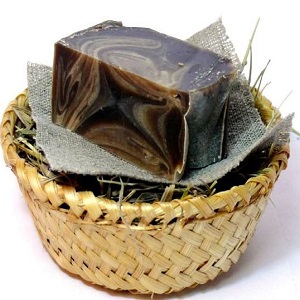 TO traditional methods include funds alternative medicine, which are found in almost every home and have long proven their effectiveness. For example, miraculous power regular apple cider vinegar has. It is enough to mix vinegar and water in equal proportions and rinse your hair with this solution after washing. Then you need to rinse your hair with clean water.
TO traditional methods include funds alternative medicine, which are found in almost every home and have long proven their effectiveness. For example, miraculous power regular apple cider vinegar has. It is enough to mix vinegar and water in equal proportions and rinse your hair with this solution after washing. Then you need to rinse your hair with clean water.
Masks are also widely used. For example, a mask made from honey and cinnamon. For it you will need to take cinnamon and honey in equal proportions. Mix them well and apply to your hair. You need to keep this mask on your hair for at least 20 minutes, the ideal number of applications is 2 per week. It has been proven that such a mask completely allows you to get rid of acne on the scalp located under the hair in just a couple of weeks.
Not only acne can sometimes ruin your life, but there are also unexpected things like wen, which is especially unpleasant when they appear in the most noticeable place..
Watch the video about acne from the first channel.
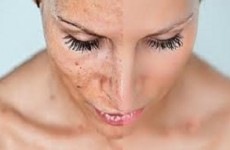
10 comments have already been left - leave yours
Discussion: 10 comments.
My children are getting some kind of bumps, the abscess doesn’t seem to be visible, but there are bumps different sizes After I apply the brilliant green it goes away immediately. What could it be?
A bump on the head can appear for many reasons; in children it is often associated with bruises and injuries. It is possible that a bump on the head may appear for more serious reasons: dysfunction of various organs, metabolic processes, endocrine system. Since the problem is related to children, it is better not to diagnose it yourself, but to seek help from a pediatrician.
Hello, please tell me, I have a pimple on my head, like a lump comes out and my hair falls out, what could it be? Can you please tell me?
From the description it looks like a wen. It is not dangerous to health. Details can be found in the article, but if this bothers you greatly, then contact your surgeon. Fat deposits are removed surgically.
There are pimples on the head and hair falls out there
The problem appeared, hard ones came, one hit with a fingernail and it disappeared there, but not right away, I’m afraid I don’t have time to go to the doctor right now, is it dangerous? or it will still pass.
Topic, I hope you treated the wound on your head with an antiseptic (salicylic acid, alcohol tincture of calendula, hydrogen peroxide), if I understood correctly, the pimple was accidentally squeezed out. If you notice suppuration at the wound site, go to the doctor.
If your hair is falling out, it could be wen. They are not hazardous to health. But go to an appointment with a specialist (dermatologist, surgeon, cosmetologist).
Acne has appeared on my head and I can’t find a suitable shampoo, please tell me what shampoo I can use?
Tim, try trifoliatus.
This is not exactly a shampoo, but rather a natural substitute.
but he heals skin diseases, normalizes fat balance and does not clog pores.
Acne on the head does not cause as much discomfort as on those parts of the body that are more visible to others, but this does not stop the problem from being important. Let's consider its causes and solutions.
What could they be?
Some people notice that pimples appear on the scalp to the touch, while others initially experience discomfort from painful sensations. Pimples on the head can be different: for some they are small subcutaneous bumps, for others they are large purulent pimples.
Localization can also be different: for some, inflammatory elements appear on the top of the head, for others, acne appears on the back of the head, and for others, the entire head is covered with them.
All these factors are important and significant for the doctor when making a diagnosis. Also, knowing the characteristics of the rashes, it is easier to choose correct treatment. If you have the opportunity to visit a doctor, it is better to do so. He will not only conduct a visual examination, but also, if necessary, analyze the contents of the pustules in order to more accurately determine the cause of inflammation and prescribe the most correct treatment. If this is not possible, we will try to determine why pimples appeared under the hair on our own.
Reasons for appearance
Why do acne appear on the head? The reasons may be different:
- Not washing your hair often enough. Some people mistakenly believe that you shouldn’t wash your hair too often - supposedly this will make your hair dull and brittle. Actually this is not so - modern shampoos well adapted to daily use. Men should wash their hair daily - the skin on their heads is denser, there are more sebaceous glands on it, which means they need to remove sebum regularly, otherwise pimples will appear.
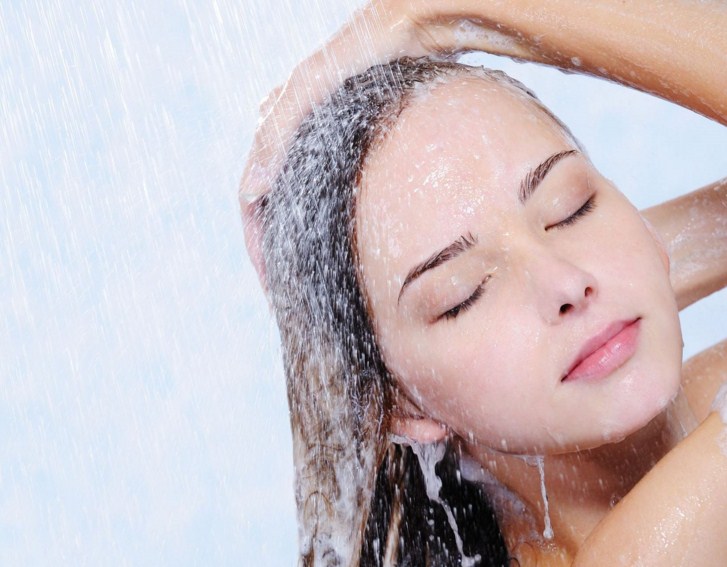
Please note: if your head itches often, this is also a reason to wonder if you are washing your hair too rarely. Every person has a lot of bacteria under their nails, so scratching the skin can lead to infection and even more acne.
- Excess of junk food in the diet. The most important rule to ensure healthy skin is very simple, but few people can follow it - this is proper nutrition. Not only nutritionists, but also dermatologists speak about the dangers of fatty, sweet and smoked foods, although their specialization is solving the problem of acne in a different way.
- Stress. Nervous shocks and constant worries are unlikely to cause profuse acne to appear on the scalp, but if such a phenomenon is not uncommon for you, stress may well aggravate the situation.
- Shampoo is not suitable for you. This is also not uncommon. Try changing the product you use: there are many options for oily skin is in the arsenal of Head&Shoulders. You can also try shampoos from a more expensive segment, for example, Freshment from LEBEL or Dercos from Vichy. It would be a good idea to try the effects of medicated shampoos, for example, Sebiprox, Nizoral or Algopix - perhaps this will help solve the problem.
- Hormonal imbalances. Often, red pimples on the scalp occur in pregnant women, teenagers, and men with excess testosterone in the blood. If the matter is hormonal imbalance may require treatment with special medications. In the case of pregnancy, it will be possible to solve the problem only special care, because hormonal changes during this period, this is a normal process and should not be interfered with.
- Inappropriate headgear. A hat, cap or hat should not put pressure on the scalp so as not to disrupt blood microcirculation. It is better if the headdress is made of high-quality natural materials. Like clothes, it needs to be cleaned regularly: if you can’t wash it yourself, have it dry cleaned regularly. A huge amount of daily accumulated sebum, dirt, dust accumulates on the headdress - all this gets on the skin, which can cause inflammation.
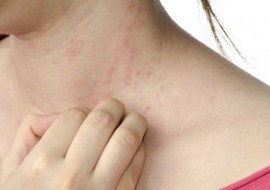
How to get rid of acne on your head?
If you have at least an approximate guess why acne may have appeared on your head in your particular case, it will be easier to determine how to treat it. If there are no guesses, it is better to consult a doctor and undergo the necessary tests.

It is impossible to get rid of inflammation on the scalp with the same products that are used to eliminate acne on the body or face. For this you need special preparations:
- Antibacterial ointments. They are applied to inflamed areas of the skin after the hair is washed and dried. Levomekol, ichthyol or syntomycin ointment are suitable.
- Rubbing the scalp with alcohol tinctures. Some people prefer to dry pimples with calendula tincture, salicylic acid, ordinary medical alcohol, fucorcin and other means.
- Antibiotics. For treatment acne, regardless of where it is located, antibiotics are often prescribed: Amoxicillin, Tetracycline, Erythromycin and others.
- Other medications. Depending on what your problem is, you may need to take other medications. For example, if a woman is diagnosed with a hormonal imbalance, the doctor may recommend taking estradiol-based medications. If the problem is vitamin deficiency, multivitamins or calcium, selenium and zinc supplements are prescribed separately. To cleanse the body of toxins and waste, Enterosgel or Polysorb can be prescribed.
- Hardware techniques. You can get rid of acne on your head in a cosmetologist’s office - quickly and painlessly. Pay attention to procedures such as cryotherapy and darsonvalization. In addition to normalizing the activity of the sebaceous glands and reducing the number of acne, improving the quality and thickness of hair will be a pleasant bonus. This effect is achieved by increasing blood circulation in the affected area.
Please note: the simplest and also very nice way To reduce the number of rashes is to visit a solarium. Radiation has a beneficial effect on the skin, drying out existing inflammation.
Getting rid of acne in hair at home
Acne on the head can be cured not only with medications and hardware procedures. Those products that everyone has at home will also help:
Apple vinegar. It is diluted with water in equal quantities, after which it is used to rinse washed hair. Vinegar disinfects the skin and reduces inflammation.
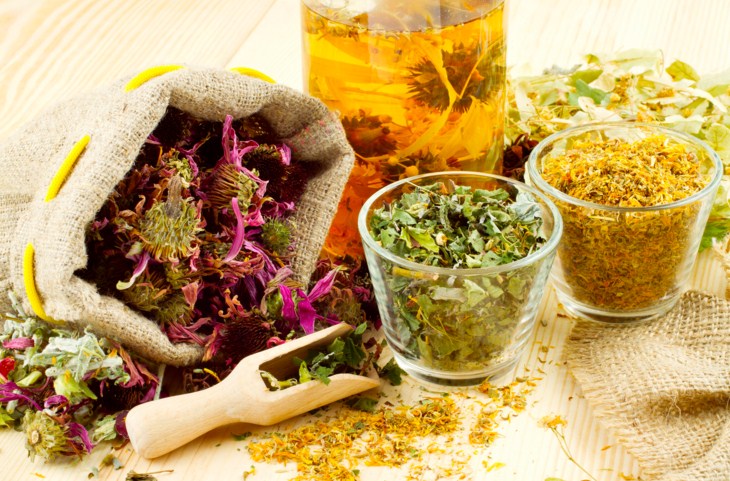
Herbal decoctions. Many may not like it bad smell apple cider vinegar– in this case, you can try to cure pimples by rinsing with decoctions of medicinal herbs. Chamomile, string, yarrow - all these herbs can be bought at the pharmacy all year round. They are inexpensive, but bring invaluable benefits.
Tea tree oil. This is what pharmaceutical product, which should be at home for everyone with problematic skin prone to inflammation. Tea tree oil disinfects the epidermis, soothes the scalp, and accelerates the healing of acne. It can be used in different ways. If your pimples are very painful, you can gently apply the oil with your fingers. If they do not cause any particular discomfort, you can drop 5-6 drops of oil onto the teeth of a regular comb and run it through your hair. It is advisable that the therapeutic combing procedure lasts at least five minutes.
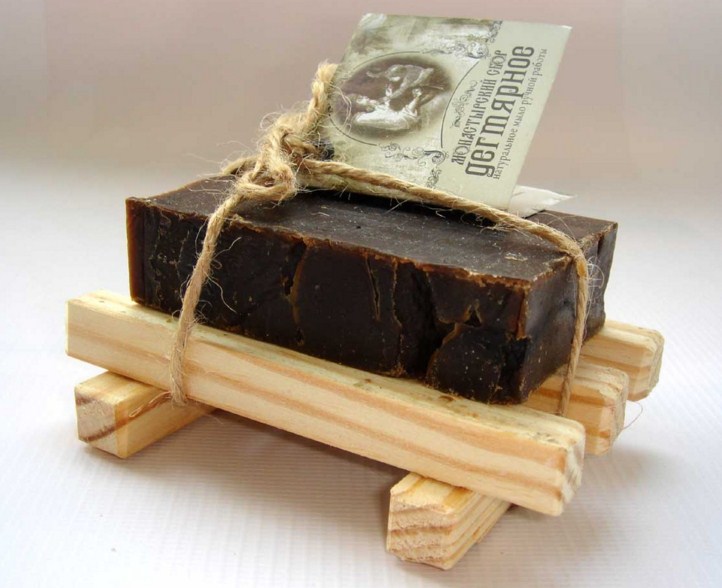
Tar soap. Another economical way to get rid of acne in your hair is to wash your hair with tar soap. It kills bacteria, dries out pimples, and with regular use (but don't wash your hair with it every day) makes your skin clear. In pharmacies and regular supermarkets you can purchase both solid and liquid versions of this soap.
There are especially many sebaceous glands on the scalp, so it quickly becomes oily. Dust and dirt from the street, dead particles of the epidermis, dandruff - all of them, when mixed with skin sebum, become a favorable environment for the appearance of pathogenic bacteria and clogging of pores, which often causes acne to appear on the skin. They often cause concern not only to their own appearance, but also because they hurt and itch.
Fortunately, getting rid of inflammatory elements on the head is not a problem today - there are both cosmetic and medical supplies, and recipes traditional medicine. In addition, do not forget about proper nutrition, a healthy lifestyle and minimizing stress - all this will help you make your skin beautiful and healthy.
Pimples on the head in men and women - unpleasant phenomenon, causing a lot of suffering and inconvenience. Comedones and ulcers located under the hair appear for various reasons.
Complex therapy will help get rid of acne on the scalp. Check out effective methods treatment and prevention, write down folk recipes to combat ulcers on the head.
Causes
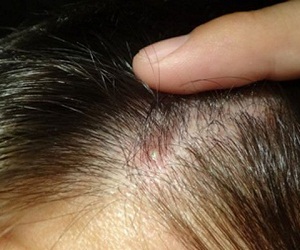
Abundance sebaceous glands, hairline, constant exposure to dirt, dust, and atmospheric factors is fertile ground for the development of inflammatory processes. Often purulent rashes noticeable not only in the hair, but also on the forehead and temples.
Pimples of various nature arise under the influence of external and internal factors. Who is more likely to have an inflamed scalp: men or women? Why do pustules appear?
Why do acne appear on the head? Main reasons:
- excessive production of sebaceous secretions plus the ingress of dust, dirt, and industrial contaminants;
- frequent stress, nervous system disorders;
- reduced immunity, lack of vitamins;
- violation of water-fat balance;
- polycystic ovary syndrome (pathology develops in women);
- poor nutrition;
- hormonal disorders in both sexes;
- poor hygiene, improper care behind the hair;
- fungal, bacterial infections;
- synthetic fabrics from which bed linen is made;
- long-term use of certain medications - antibiotics, steroids;
- smoking, alcohol abuse;
- hard water, poor-quality hair care products.
Varieties
Correct treatment is possible after determining the cause and type of rash on the scalp. Acne on the scalp is divided into two types. How is each variety different?
Comedones
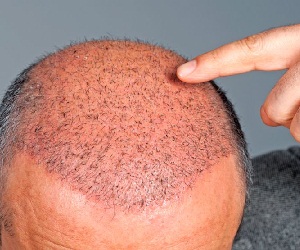
A characteristic sign is the absence of inflammation. After blockage of the sebaceous glands, the ducts become clogged, and dust and dirt are added to the secretions.
As long as the infection has not penetrated, this type of acne does not cause inconvenience. Closed comedones are located in the deep layers of the dermis and do not cause serious discomfort.
Inflamed acne
As soon as pathogens of various types come into contact with the skin infectious diseases, comedones quickly turn into ulcers. Often redness and itching appear after scratching the head or trying to squeeze out pimples.
A favorable environment provokes the rapid development of the inflammatory process. Without timely treatment pustules easily spread throughout the head.
General rules of treatment
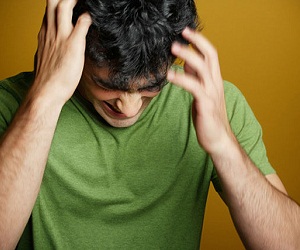
Patients often make one mistake: they begin to squeeze out the contents of the inflamed capsules. The result is disastrous: the infection spreads to new areas, the number of ulcers increases. In severe cases, serious complications are possible.
How to get rid of acne on your head? Ten basic rules of treatment:
- do not squeeze out the contents of inflamed comedones;
- visit a dermatologist or trichologist, get examined by specialized specialists;
- review your diet;
- give up bad habits;
- spend more time caring for your hair;
- combine medications and traditional medicine recipes;
- refuse synthetic fabrics in bed linen;
- avoid stressful situations;
- choose quality ones cosmetic products without irritating components;
- take immunomodulatory drugs, multivitamins.
Important! After examination, establishing the cause of purulent rashes and comedones, do not delay the start of therapy. Follow your doctor's recommendations strictly.
Drug therapy
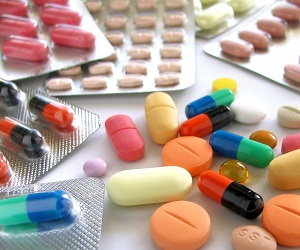
Effective drugs and procedures:
- camphor alcohol. Wipe acne clusters, treat the skin gently, without pressure. Apply the active product only to the affected areas, healthy skin Do not lubricate: irritation and itching will occur. Salicylic alcohol shows good results;
- anti-inflammatory ointments. Levomikol, Zinc, Erythromycin ointment, Syntomycin emulsion give excellent results. In each case, the medication is selected taking into account individual characteristics. Wash your hair, dry your strands, lubricate the affected areas with the prescribed product. Do not use ointments more than normal;
- tar soap. Before washing your hair, treat the ulcers with an active antiseptic. Soap foam relieves inflammation and dries the skin;
- Vishnevsky ointment, Ichthyol ointment. Both drugs have long been successfully used to eliminate inflammatory processes in the various areas bodies. For single pimples, lubricate the inflamed area, cover with a bandage, and secure with a band-aid. If there are numerous ulcers, carefully lubricate the affected areas with the composition, do not treat healthy skin;
- antibiotics. Doctors prescribe potent drugs only in severe cases, when there is a threat of infection spreading over a large area, or possible blood poisoning. Amoxicillin, Erythromycin, Tetracycline are effective. At the same time, take medications that restore intestinal microflora, for example, Linex;
- UV irradiation sessions. Dermatologists often prescribe effective procedure to reduce inflammation. UV rays suppress the activity of pathogenic microbes and dry out the epidermis. Sessions are conducted in medical institutions and specialized cosmetology clinics.
Recipes and traditional medicine
Treat inflamed areas with decoctions medicinal herbs, apply compresses from natural ingredients, lubricate the affected areas with homemade tinctures. To wash your hair, use a medicated shampoo that you prepare yourself.
Before using traditional recipes, consult a dermatologist or trichologist, check which means are suitable in your case. Avoid using mixtures that irritate the skin.
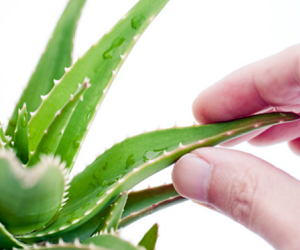
Proven recipes for treating acne on the head under the hair:
- aloe for acne. Cut a piece of leaf, divide it in half, apply the pulp to the sore spot. Are there a lot of ulcers on your head? Squeeze out aloe juice and lubricate the affected areas. Wash off after half an hour;
- tea tree oil. An excellent antiseptic that effectively fights pimples. Add a powerful ether to shampoo, mask, pure form do not apply to ulcers: epidermis burns are possible;
- tincture of calendula. An affordable, proven product with a drying, anti-inflammatory effect. Calendula tincture is sold in pharmacies. Prepare a solution: 1 glass of boiled water plus 2 tbsp. l. tinctures. Wipe the ulcers daily until they disappear completely;
- anise mask. Pour 3 tbsp. l. seeds with hot water and leave overnight. In the morning, strain, prepare a paste, and treat areas of inflammation. After an hour, rinse your hair and rinse with a decoction of yarrow;
- infusion of chamomile and calendula. You will need 1 tsp. each type of raw material. Grind the herbs, put them in a jar, pour 200 ml of boiling water. After 30 minutes, filter the liquid. Treat the ulcers, wipe the adjacent areas. Carry out the procedure every day. The infusion reduces inflammation;
- medicinal shampoo made from colorless henna. Pour natural powder (2–3 tbsp.) warm water, let soak for 45 minutes. Add the mashed egg and mix the ingredients. Apply the cleanser to stale strands with light movements, wait 5 minutes, rinse your hair;
- honey-cinnamon mask. An excellent remedy for rashes. You will need 3 tbsp. l. light honey, 1 tsp. ground cinnamon. Warm the honey a little, add aromatic powder, treat the inflamed areas. Do not cover your head as you would normally do when using masks. Rinse off the cinnamon-honey mixture after 20 minutes, moisten the skin and strands with chamomile infusion.
Diet and diet changes
Changing your diet is one of the conditions for successful treatment. Check how much you consume sweet, fatty, spicy foods, whether you like smoking, pickles, foods with dyes and preservatives. If the affirmative answers are sufficient, urgently change your diet.
Avoid foods and dishes that provoke increased activity sebaceous glands. Eat healthy.
Consume more:

- vegetables;
- leafy greens;
- fruit;
- fermented milk products;
- boiled meat (lean);
- hard varieties of cheese;
- sweet compotes;
- light vegetable soups;
- lean sea fish.
- bran bread;
- berry, fruit jelly;
- herbal decoctions;
- porridge;
- legumes
Limit your intake:
- cocoa;
- sweets;
- muffins;
- sweets;
- halva;
- sweet soda;
- fast food;
- fatty meats and fish.
Important! Stop smoking and alcohol. Tobacco smoke and ethyl alcohol impair the supply of oxygen to blood vessels and poison the body with toxins. Internal failures immediately affect the condition of the epidermis.
The fight against inflamed comedones is a long, not always successful process. Only by identifying all the causes that caused purulent rashes and proper treatment will there be improvement. It is easier to maintain normal skin condition and take action at the first signs of deterioration.

- choose a shampoo and conditioner for your hair type. Use medicinal cosmetics;
- Clean the comb from sebaceous secretions, dandruff particles, dirt, dust. Often it is this object that causes the infection to spread throughout the entire head;
- do not spare money on quality cosmetic products;
- wash your hair with boiled water, soften hard water vinegar;
- regularly take vitamin supplements and compounds that strengthen the immune system;
- pay attention to hygiene, wash your hair on time, especially when working in harmful conditions. The accumulation of dust, dirt, plus skin secretions is a favorable environment for the development of microorganisms;
- treat pathologies in a timely manner internal organs, control hormone levels, monitor the functioning of the thyroid gland;
- Be less nervous, get enough rest;
- give up spicy, salty, fatty foods, eat less chocolate and sweets;
- buy bed linen made from natural fabrics;
- stop uncontrolled use of medications;
- To prevent inflammation, rinse your hair regularly herbal decoctions, make masks with natural ingredients;
- When the first pimples appear, think about what led to the appearance of comedones. Do not delay your visit to the doctor, follow the recommendations.
Now you know why acne appears on the head of women and men. Do not allow rashes to spread if fungal, bacterial infections Contact specialists in a timely manner and carry out complex therapy. Use traditional recipes, watch your diet. Remember: A small abscess often leads to a big problem.
But also on the head, under the hair. They, of course, provoke a lot of discomfort. Pimples can be easily damaged by scratching and can cause pain, so you need to know how to get rid of them.
Many signs will let you know that acne has appeared on your head. Firstly, it is severe itching, which begins literally immediately from the moment they appear. After a few days, raised red lesions on the skin may appear. Severe pain may be felt as you touch them.
As pimples mature, they can fill with pus. A few days later they break through. Individual pimples and extensive rashes may appear. They can be located in the area of the temples, neck, and at the top of the forehead. If the formations were large and deep, they may leave scars.
Pimples don't just appear. They can talk about certain problems in the body. Acne often affects teenagers, pregnant women, and girls. In these cases, the cause is hormonal imbalances and changes. There are also many everyday reasons. This includes poor personal hygiene, the use of low-quality cosmetics, and so on.
Acne develops roughly as follows. Each of the three skin layers: epidermis, dermis and hypodermis is responsible for a specific set of functions. In the dermis, which is connective tissue, there are sebaceous and sweat glands. They are located directly on the face and head.
Excess fat comes out through the pores and mixes with sweat. The skin is covered with a hydrolipid film that provides protection against bacteria and moisture. If bacteria overcome it and penetrate the pores, inflammation appears in the form of acne.
The rash can even appear in infants. In this case, the reason must be sought in improper diet mother. If the child is older, the provoking factor may be allergies to food, medications, and even toys. Also, often acne on the head can indicate the beginning of the development of chickenpox in a baby.
In addition, there are such common reasons that cannot be excluded:
- Poor nutrition. The body can react with acne to infatuation. harmful products. Then the doctor may prescribe a special diet.
- Stress and nervous tension can affect the condition of the scalp.
- Acne in girls can be the result of a disruption in the menstrual cycle.
- Excessively cold temperatures may have an effect, so be sure to wear a hat during the cold season.
- Pimples on the head are a consequence of using synthetic bedding. If this is the reason, then all you need to do is replace the textiles.
What are they?
Acne on the scalp develops in much the same way as on the face. And they can manifest themselves in the following ways:
How to deal with them?
Acne should be treated only under the supervision of a specialist. The fact is that they can only be manifestations of some more serious problems. Therefore, sometimes an examination of the body is necessary to determine the cause of acne.
The main methods of combating acne on the head are as follows:
- Antibacterial drugs. In pharmacies you will find a wide range of such products. Before using them, you will need to wash your hair well and dry your hair. Then the ointments are applied in small portions to problem areas.
- Ichthyol ointment. Considered one of the best in the fight against purulent inflammations. Apply the product very carefully only to the affected areas.
- Salicylic alcohol. Rub it on the skin around each pimple. Do this carefully to prevent burns. You can also use camphor alcohol.
- Tar soap. A very good antiseptic. Use to wash your hair. The pharmacy also sells special tar shampoos that have a healing effect and help fight acne. You can read the article for more details about it.
- Antibiotics. Prescribed only in severe cases. To treat acne under the hair, erythromycin, tetracycline, and asoxicillin can be prescribed. After taking antibiotics, means may be indicated to restore normal microflora in the intestines.
- Ultraviolet treatment procedure. It must be carried out professional cosmetologist. Ultraviolet light acts on problem areas, helps dry out acne and relieve inflammation.
In addition, to combat acne on the head, you can use proven folk remedies:
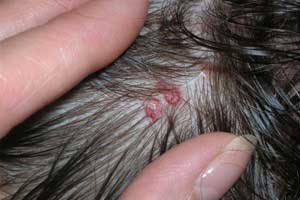
First of all, it is not recommended to squeeze pimples to avoid infection. You should also be careful with products that tend to dry the scalp (such as tar soap and products containing alcohol). They should be used sparingly so as not to aggravate the problem.
Preventive measures
The risk of scalp acne cannot be completely eliminated, but you can reduce its likelihood by taking simple steps. preventive measures. Among them, the following are effective:
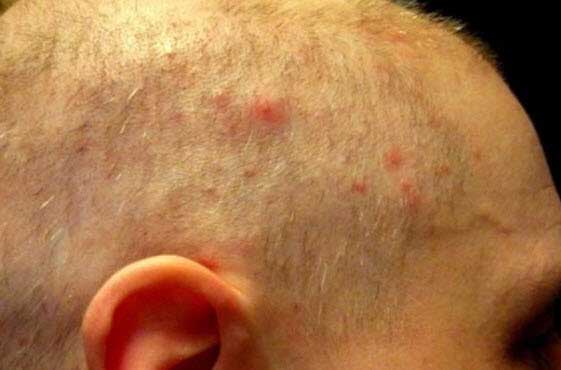
If unpleasant pimples under your hair still appear, do not be afraid to consult a specialist. He will identify the cause of this undesirable phenomenon, and will be able to prescribe suitable measures to combat it.
